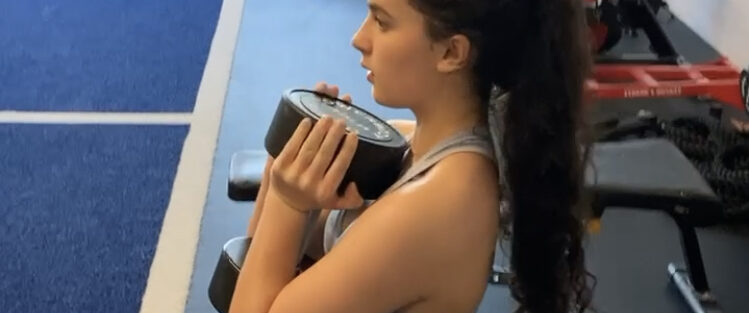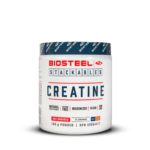When it comes to helping young athletes gain weight, we have had success when taking the following considerations into our programming.
There are many parents, sports coaches, and young athletes themselves searching for methods to help with weight gain. This is especially true for the parents of young athletes who are looking towards a future in contact sports; or for those athletes who consider themselves to be “late-bloomers,” as they watch more physically mature peers zip by.
I think young athletes and their parents would be happy to learn that beginning a strength training program can result in significant weight gain for both girls and boys. This post will detail the mechanisms by which we at AXIS Performance + Training have seen increases in bodyweight between 20lbs and 50lbs in a typical span of twelve to twenty-four months. We will explore this topic with a mix of anecdotal experience as well as what we know from the scientific literature.
Adolescence and Caloric Intake
Children are primed to grow. Above all else and against all odds growing is what they are going to do. The physiological changes that take place in children during puberty, from increases in bone density to rising levels of anabolic hormones, are designed to increase their size and body weight. So children already have biology working in their favor. When strength training is added, the extra physical stress gives the body more reason to produce denser bones and larger muscles.
To help speed up this process, the most important thing to look at is food. Calories are important for fueling the physiological processes that occur during pubescence as well as for fueling activity levels. Ensuring youth athletes get more enough calories for both is the number one strategy to help them gain weight. For parents, this means that even though they, being adults, are larger, their children likely need to eat far more than they do. Because of their age and high energy expenditures, it is hard to feed strength-training children enough! Here is the Mifflin Formula for both males and females. Use it to plan an appropriate feeding schedule:
Males: 9.99x kg + 6.25 x cm – 4.92 x age + 8
Females: 9.99 x kg + 6.25 x cm – 4.92 x age – 161
You can use a calorie tracking app like MyMacros+ to keep track of calorie intake.
Strength Training: The Big 6
When talking about using the gym to emphasize weight gain, here are six points of program design that we have found to produce successful increases in bodyweight over the 12-24 month timeframe mentioned earlier:
1. The Ideal Training Window: Children who train between 3pm and 5pm have usually not eaten since lunchtime outside of, perhaps, a snack. They train relatively intensely (in terms of performance, this window seems also to be an ideal time for children to strength train as well) and will often mention food toward the end of the workout. They then go home and stuff themselves at a time when their muscle fibers are more sensitive to insulin (a hormone which increases the uptake of nutrients from the blood) resulting in greater repair and growth of muscle tissue. Because of the timing, they are also often able to sneak in an extra snack or liquid meal before bedtime.
2. Scheduled Feedings: Children who learn to eat on a schedule as opposed to when they, “feel,” hungry will grow more in response to training.
3. Concurrent Training: Concurrent training models seem to help ignite the appetite in this age group. A Concurrent model is one in which an athlete trains multiple qualities in every session. This means sprints; jumps; throws; agility work; strength training; and perhaps some form of conditioning. The variety of the work performed targets a large amount of muscle fibers across different energy systems, while the novelty of the work continues to develop neurological adaptations. These adaptations result in surprising increases in strength performance, and the literature surrounding Concurrent training programs for young athletes confirms this. The stronger these young athletes get, the more weight they are comfortable using, and the more their muscle fibers tend to grow.
While the response of one’s appetite to training is under ongoing investigation, we do know that combinations of physical stressors which promote higher lactate levels (muscular fatigue/burning) seem to go together with higher levels of growth hormone and higher levels of ghrelin- a hormone that stimulates appetite. The concurrent training model seems to promote this in adolescents- especially those who are newer to training. And because movement/play and brain development are intimately linked during the adolescent period, I have a suspicion that the cognitive challenges presented by the concurrent training model also plays a factor in stimulating appetite.
4. Time & Intensity: Training at a moderate to high level of intensity for an hour vs. training moderately for thirty or forty minutes is another important factor. A certain threshold of volume and intensity must be reached if we want to promote the hormonal cascade leading to increased hunger as described above. Children are natural self-regulators. Unlike older, more experienced/elite trainees, as children approach their physical limits on a given day they will make it clear through words and body language. If we pay attention, it isn’t difficult to push them while still protecting their developing bodies.
5. Hit Everything: Full-body training is another important programming point. Children looking to gain weight should perform resistance work that involves as much muscle mass as possible. That means training all major joint systems every session.
6. Supplementation: Lastly, children can use supplements in the form of either protein or creatine. This is a big one because we get asked about youth athletes and supplementation quite a bit. I’m a big believer in supplementation but I very rarely recommend creatine for children. When I do it is for the dedicated few who fit the criteria laid out by the research provided in Frontiers in Nutrition and the International Society of Sports Nutrition (ISSN). As for protein supplements, I find that most kids don’t enjoy them. So try and find a high-quality brand that tastes good, such as the Biosteel product line or perhaps mixing in the protein with some fruits and berries in a blender.
Happy Training!



